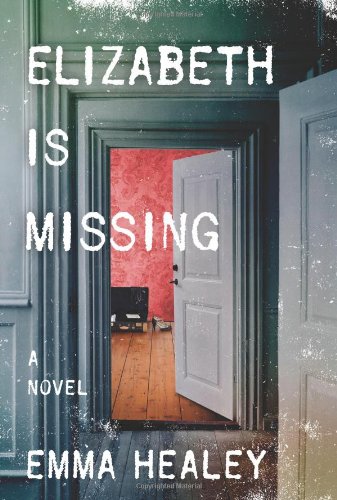(Due to mysterious and unforeseen technical difficulties with the second installment post about Sir Thomas Overbury's murder-by-enema a couple of weeks back- Blogger literally ATE my blog posting! - I am re-posting Part II in its entirety today. For the first part of this post, with general historical background as well as
a fair bit about the victim, click here.)
Overbury: schemer and murder victim
|
A Quick Recap:
When last we left off we were talking about the court of English king James
I (originally James VI of Scotland), about the allocation of power, his
appreciation of pretty young men, and how those who throve at the center of his
court and those who lurked on the fringes shared an appetite for advancement
and a willingness to trade on James' predilections in pursuit of said
advancement. We also discussed the victim of this post's titular crime (Sir
Thomas Overbury, a born schemer if ever there was one), as well as the
instrument of his proposed advancement (Robert Carr, eventually earl of
Rochester–one of the aforementioned "pretty young men").
So what happens when two guys, one smart, the other handsome, have a good thing going, working an influential "relationship" with the king (which in turn allows them to peddle their own influence to others looking for their own positive outcomes, a "royal ripple effect," if you will), and the eye-candy half of this dynamic duo suddenly falls ass-over-tea-kettle in love?
With a woman, no less?
(Note that I said "woman," not "lady".)
Let's find out!
So what happens when two guys, one smart, the other handsome, have a good thing going, working an influential "relationship" with the king (which in turn allows them to peddle their own influence to others looking for their own positive outcomes, a "royal ripple effect," if you will), and the eye-candy half of this dynamic duo suddenly falls ass-over-tea-kettle in love?
With a woman, no less?
(Note that I said "woman," not "lady".)
Let's find out!
Robert Carr after he began to lose his looks.
|
The Conspirators:
Who would want to kill this guy Overbury?
As it turns out, lots of people. In his decades spent enriching himself in royal service he had managed to alienate nearly everyone with whom he came in contact. This included members of the large and powerful Howard family, and most especially one of the great femmes fatale of the 17th century, Frances Howard, daughter of the Earl of Suffolk, and initially wife of Robert Devereux, 3rd Earl of Essex, and son of infamous 2nd earl (executed for treason by Queen Elizabeth in 1601).
The Femme Fatale: Lady Frances Howard
"Lady" Frances Howard: With a Neckline
Like This...
|
Married to the wealthy earl of Essex at age 12 (he was 13), Frances Howard apparently never consummated her married to the earl, in part because he left not long after the nuptials for a tour of the continent (common for young men at the time), and also in part because the "happy couple" apparently quickly came to the realization that they could not stand the sight of each other.
As reported in her family's suit to annul the union Frances Howard reportedly "reviled [Essex], and miscalled him, terming him a cow and coward, and beast." On top that, also according the "lady" in question, Essex was impotent.
Essex disputed this assertion, insisting that he was quite capable of performing in the bedroom with any number of ladies, just not with Frances Howard, whose virginity he very much doubted.
The Earl of Essex in happier times (Post-annulment)
|
In a nutshell, Frances claimed Devereux couldn't get it up, and
Devereux's defense was that he could, just not with a slut like the one he'd
married.
The annulment was eventually granted in September, 1613. By this time Lady Frances had already taken up with our old friend Robert Carr, earl of Rochester, and favorite of the king. They were married soon afterward.
The Pimp: Henry Howard, Earl of Northampton
As discussed in our previous entry there were any
The annulment was eventually granted in September, 1613. By this time Lady Frances had already taken up with our old friend Robert Carr, earl of Rochester, and favorite of the king. They were married soon afterward.
The Pimp: Henry Howard, Earl of Northampton
As discussed in our previous entry there were any
Nice Hat, Redux: the Earl of Northampton
|
number of hangers-on at court interested in advancing their own
fortunes and willing to exploit the king's "interest" in pretty young
men to their own advantage. Overbury was one of the most successful of this
type, but he was hardly the only one.
One other such rank opportunist was Henry Howard, earl of Northampton. The scion of a large and powerful family, Howard was wealthy and connected. But he wanted to be better connected, and he wasn't above prostituting his own niece in order to get what he wanted.
With the Earl of Rochester exercising so much influence over King James and Overbury in turn exercising so much influence over Rochester, it occurred to Howard that Rochester, who was clearly not the sharpest knife in the drawer, might be pried away from Overbury, and, simpleton that he was, would then need a new "good friend" to tell him what exactly to whisper in the king's ear during those long, late-night tuck-in sessions.
Whether the earl decided to use his niece Frances because of her damaged reputation (you know, her first husband calling her a whore, and all), or because that reputation might be closer to the mark than the family was comfortable with, nevertheless placed her in Rochester's path with the aim of seducing him.
Rochester never stood a chance. He fell. Hard.
The Conflict
Overbury was understandably livid. He did everything in his power to block his protege/stooge's budding romance, telling his erstwhile only friend that his new love was "noted for her injury and immodesty." Rochester would not be swayed. The only thing keeping him from making Frances Howard the new Countess of Rochester was the formalization of her impending annulment.
But Overbury wasn't finished. While the young lovers awaited the moment when they might marry, Overbury wrote and published a poem entitled A Wife. In this poem Overbury (a bachelor) laid out the characteristics a young man ought to look for in a spouse. It quickly became clear to Lady Frances Howard that in Overbury's opinion she possessed none of these qualities.
Thus was born a rivalry that would culminate in murder...
By enema!
In our next and final installment, palace intrigue, imprisonment in the Bloody Tower, the use of an
One other such rank opportunist was Henry Howard, earl of Northampton. The scion of a large and powerful family, Howard was wealthy and connected. But he wanted to be better connected, and he wasn't above prostituting his own niece in order to get what he wanted.
With the Earl of Rochester exercising so much influence over King James and Overbury in turn exercising so much influence over Rochester, it occurred to Howard that Rochester, who was clearly not the sharpest knife in the drawer, might be pried away from Overbury, and, simpleton that he was, would then need a new "good friend" to tell him what exactly to whisper in the king's ear during those long, late-night tuck-in sessions.
Whether the earl decided to use his niece Frances because of her damaged reputation (you know, her first husband calling her a whore, and all), or because that reputation might be closer to the mark than the family was comfortable with, nevertheless placed her in Rochester's path with the aim of seducing him.
Rochester never stood a chance. He fell. Hard.
The Conflict
Overbury was understandably livid. He did everything in his power to block his protege/stooge's budding romance, telling his erstwhile only friend that his new love was "noted for her injury and immodesty." Rochester would not be swayed. The only thing keeping him from making Frances Howard the new Countess of Rochester was the formalization of her impending annulment.
But Overbury wasn't finished. While the young lovers awaited the moment when they might marry, Overbury wrote and published a poem entitled A Wife. In this poem Overbury (a bachelor) laid out the characteristics a young man ought to look for in a spouse. It quickly became clear to Lady Frances Howard that in Overbury's opinion she possessed none of these qualities.
Thus was born a rivalry that would culminate in murder...
By enema!
In our next and final installment, palace intrigue, imprisonment in the Bloody Tower, the use of an
astrologer to further a
murder plot, emetics, and poison!
See you in two weeks with the conclusion of our sordid little tale!
See you in two weeks with the conclusion of our sordid little tale!
Posted
by DoolinDalton at 01:32 

















 by Jan Grape
by Jan Grape













.jpg)



